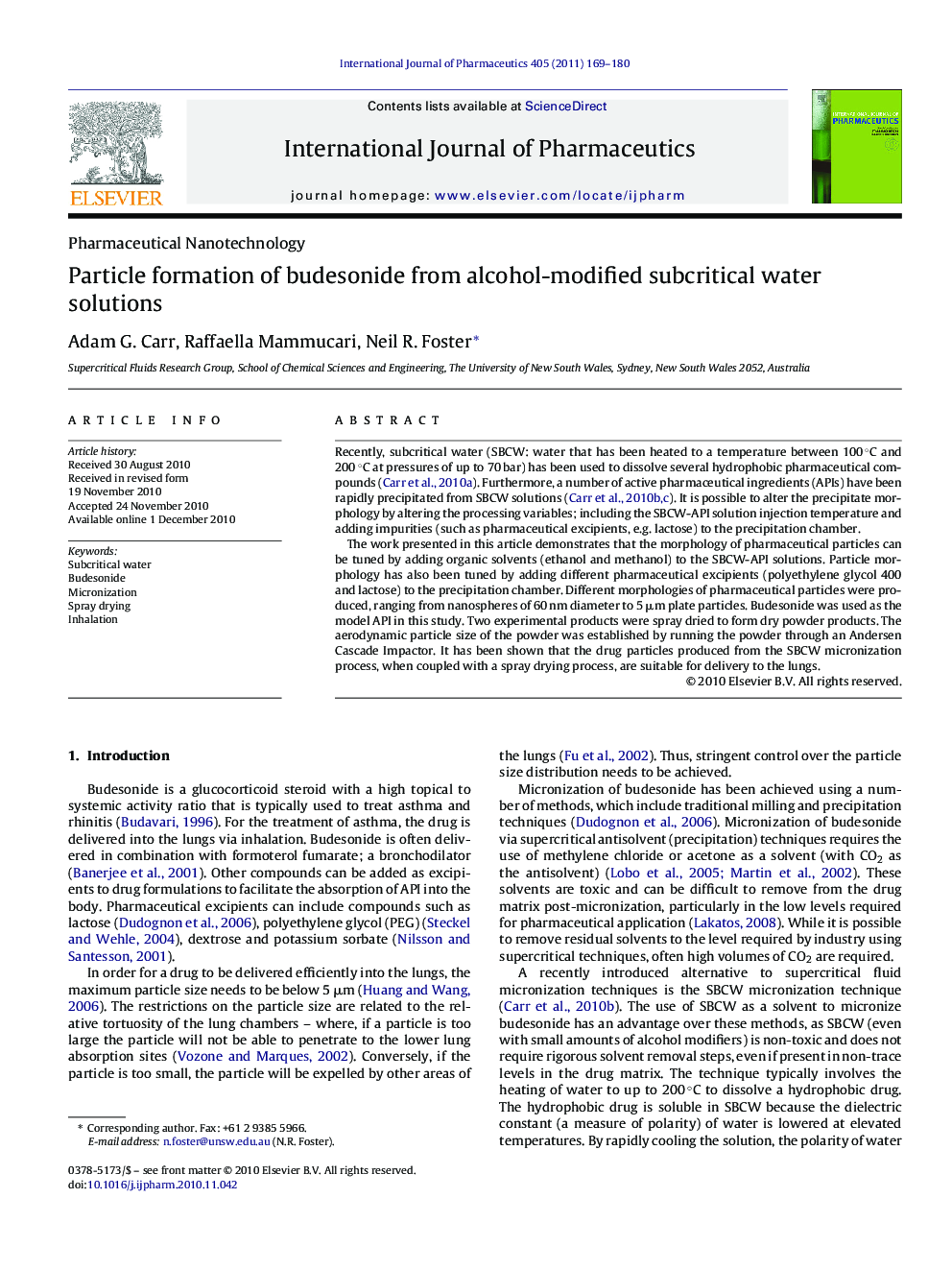| Article ID | Journal | Published Year | Pages | File Type |
|---|---|---|---|---|
| 2503651 | International Journal of Pharmaceutics | 2011 | 12 Pages |
Recently, subcritical water (SBCW: water that has been heated to a temperature between 100 °C and 200 °C at pressures of up to 70 bar) has been used to dissolve several hydrophobic pharmaceutical compounds (Carr et al., 2010a). Furthermore, a number of active pharmaceutical ingredients (APIs) have been rapidly precipitated from SBCW solutions (Carr et al., 2010b and Carr et al., 2010c). It is possible to alter the precipitate morphology by altering the processing variables; including the SBCW-API solution injection temperature and adding impurities (such as pharmaceutical excipients, e.g. lactose) to the precipitation chamber.The work presented in this article demonstrates that the morphology of pharmaceutical particles can be tuned by adding organic solvents (ethanol and methanol) to the SBCW-API solutions. Particle morphology has also been tuned by adding different pharmaceutical excipients (polyethylene glycol 400 and lactose) to the precipitation chamber. Different morphologies of pharmaceutical particles were produced, ranging from nanospheres of 60 nm diameter to 5 μm plate particles. Budesonide was used as the model API in this study. Two experimental products were spray dried to form dry powder products. The aerodynamic particle size of the powder was established by running the powder through an Andersen Cascade Impactor. It has been shown that the drug particles produced from the SBCW micronization process, when coupled with a spray drying process, are suitable for delivery to the lungs.
Graphical abstractFigure optionsDownload full-size imageDownload as PowerPoint slide
